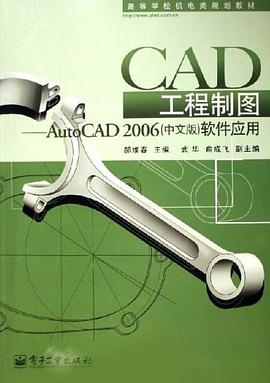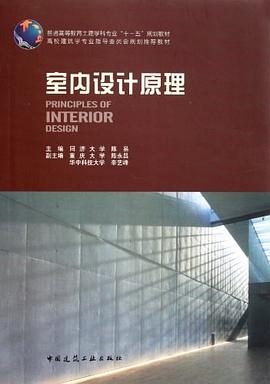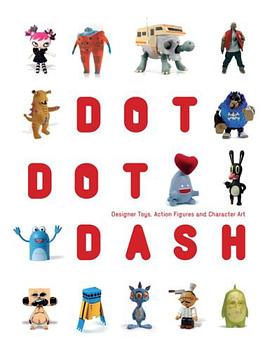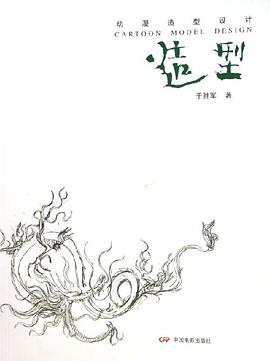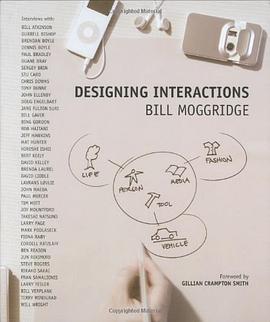
Digital technology has changed the way we interact with everything from the games we play to the tools we use at work. Designers of digital technology products no longer regard their job as designing a physical object--beautiful or utilitarian--but as designing our interactions with it. In Designing Interactions, award-winning designer Bill Moggridge introduces us to forty influential designers who have shaped our interaction with technology. Moggridge, designer of the first laptop computer (the GRiD Compass, 1981) and a founder of the design firm IDEO, tells us these stories from an industry insider's viewpoint, tracing the evolution of ideas from inspiration to outcome. The innovators he interviews--including Will Wright, creator of The Sims, Larry Page and Sergey Brin, the founders of Google, and Doug Engelbart, Bill Atkinson, and others involved in the invention and development of the mouse and the desktop--have been instrumental in making a difference in the design of interactions. Their stories chart the history of entrepreneurial design development for technology. Moggridge and his interviewees discuss such questions as why a personal computer has a window in a desktop, what made Palm's handheld organizers so successful, what turns a game into a hobby, why Google is the search engine of choice, and why 30 million people in Japan choose the i-mode service for their cell phones. And Moggridge tells the story of his own design process and explains the focus on people and prototypes that has been successful at IDEO--how the needs and desires of people can inspire innovative designs and how prototyping methods are evolving for the design of digital technology. Designing Interactions is illustrated with more than 700 images, with color throughout. Accompanying the book is a DVD that contains segments from all the interviews intercut with examples of the interactions under discussion. Interviews with:
Bill Atkinson, Durrell Bishop, Brendan Boyle, Dennis Boyle, Paul Bradley, Duane Bray, Sergey Brin, Stu Card, Gillian Crampton Smith, Chris Downs, Tony Dunne, John Ellenby, Doug Englebart, Jane Fulton Suri, Bill Gaver, Bing Gordon, Rob Haitani, Jeff Hawkins, Matt Hunter, Hiroshi Ishii, Bert Keely, David Kelley, Rikako Kojima, Brenda Laurel, David Liddle, Lavrans Løvlie, John Maeda, Paul Mercer, Tim Mott, Joy Mountford, Takeshi Natsuno, Larry Page, Mark Podlaseck, Fiona Raby, Cordell Ratzlaff, Ben Reason, Jun Rekimoto, Steve Rogers, Fran Samalionis, Larry Tesler, Bill Verplank, Terry Winograd, and Will Wright
具体描述
读后感
最近在对比着阅读一本书。英文版的《designing interactions》和中文译本《关键设计报告》。发现中文译本里面是否有错?可能译者不是做交互设计的原因吧。比如:P127,...and we provide affordance这句,应该说的是物的设计应该更容易让用户理解“可以用它来干嘛”。而非译文...
评分当然是英文的:http://www.douban.com/subject/discussion/10269573/
评分好书,图文并茂。 目前我只能用“图文并茂”来形容它的优点了,因为我第一章都没看完,羞愧…… 就是英文一串串的,阅读时眼睛跳的太快,往往不知所云,必须返回再细读。 等我认真读完,我应该上升一个境界了。
评分书中图片很多,让我回忆起年少时接触到令人振奋的信息技术后,产生的改变世界的冲动。 设计是可以让人一生追逐的东西。 书翻译得很一般,不知道是否是台湾的用语。 看英文可能还不用那么累。另外就是字体太小了,看了容易困。 所以打3分。
评分最近在对比着阅读一本书。英文版的《designing interactions》和中文译本《关键设计报告》。发现中文译本里面是否有错?可能译者不是做交互设计的原因吧。比如:P127,...and we provide affordance这句,应该说的是物的设计应该更容易让用户理解“可以用它来干嘛”。而非译文...
用户评价
交互设计及用户体验。
评分更像交互设计发展史,跟实战没啥关系
评分这本书唯一的缺点就是它太短了,2006年本书出版之后的十年间,白云苍狗,山川剧变,书中的许多伟大企业和英雄人物,片刻之间,兴亡过手,令人感慨万千……Remember the whole journey.
评分Futures and Alternative Nows那章有点扯,其他的还可以
评分全书采取微传记的形式,介绍了交互设计的发展史。可是我看了整整一年!!可见有多难读!!倒有几个点刺激了一下我的眼界
相关图书
本站所有内容均为互联网搜索引擎提供的公开搜索信息,本站不存储任何数据与内容,任何内容与数据均与本站无关,如有需要请联系相关搜索引擎包括但不限于百度,google,bing,sogou 等
© 2025 qciss.net All Rights Reserved. 小哈图书下载中心 版权所有














